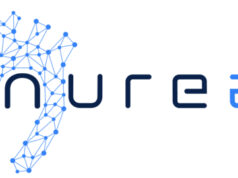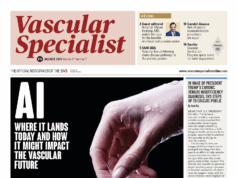The European Union Horizon Europe, with joint funding from UK Research Innovation, has awarded the NetZeroAICT Consortium €6 million ($6.4 million) in funding to develop a novel artificial intelligence (AI)-based computed tomography (CT) technology that has the potential to promote climate neutral and sustainable healthcare.
The international, transdisciplinary NetZeroAICT Consortium is headed up by Regent Lee, MBBS, a vascular surgeon scientist at Oxford University Hospitals NHS Foundation Trust and associate professor of vascular surgery at the University of Oxford in Oxford, England.
According to the multidisciplinary group—which further includes Vicente Grau, professor of engineering science at the University of Oxford—the new technology (CT Digital Contrast) can make CT scans “safer, faster, more equitable and more sustainable.”
Lee provided a high-level description of how the Technology works: the idea is to use AI to enhance non-contrast CT scans with the aim of getting the equivalent outcomes to a contrast scan. He elaborated: “When you do a contrast CT scan, you typically go through the scan twice. The first time, you have a non-contrast CT, and then, based on that non-contrast CT, the radiologist will calculate how tall you are, etc., and calculate the timing of the injection of the contrast. Next, the patient gets scanned a second time to get the contrast-enhanced CT. What we propose is that with AI, we would only require the first non-contrast CT scan. We can extract high-level information from the non-contrast CT scan using AI, overlay where contrast should be on the native non-contrast scan and display it as a digital contrast enhanced scan, without the need for the second scan.”
The funding received will allow the researchers to move Forward with development of the technology. Lee anticipates that the team will face some challenges along the way. He highlights, for example, that clinical acceptance may take time. “What we are proposing to do is quite radical,” he said. “Essentially we are proposing a complete change of how radiology services can be delivered, and there will be questions and reluctance amongst the clinicians to get used to this new way of looking at images.” He likened the task of launching the technology as “almost like trying to introduce a new language into the profession.” Lee also mentioned that patients may be fearful of using an entirely new method of imaging to treat them.
In a press release announcing the new funding, Lee commented on the wider significance of the consortium’s work: “The combined NetZeroAICT Consortium expertise will enable us to develop and deploy trustworthy ‘green’ AI software as a medical device with the ultimate goal to reduce the environmental footprint from CT imaging.
“European patients will have access to safer, faster, equitable and sustainable healthcare delivery while the healthcare systems strengthen their alignment with the European Green Deal. This is a new era of translational research. In addition to improving patients’ health, our aspiration is to improve planetary health for future generations.”











